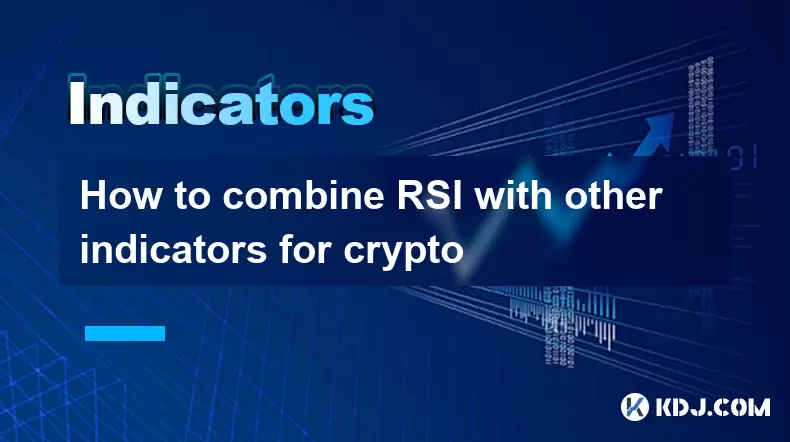-
 Bitcoin
Bitcoin $121,713.8152
3.06% -
 Ethereum
Ethereum $3,041.6437
2.42% -
 XRP
XRP $2.9499
5.12% -
 Tether USDt
Tether USDt $1.0000
-0.02% -
 BNB
BNB $704.1034
1.75% -
 Solana
Solana $166.7523
2.91% -
 USDC
USDC $0.9999
0.00% -
 Dogecoin
Dogecoin $0.2052
2.90% -
 TRON
TRON $0.3011
-0.47% -
 Cardano
Cardano $0.7461
1.42% -
 Hyperliquid
Hyperliquid $48.3650
1.12% -
 Stellar
Stellar $0.4548
3.52% -
 Sui
Sui $3.9527
14.50% -
 Chainlink
Chainlink $16.3300
5.87% -
 Bitcoin Cash
Bitcoin Cash $511.8016
1.25% -
 Hedera
Hedera $0.2395
1.40% -
 Avalanche
Avalanche $21.6526
2.06% -
 UNUS SED LEO
UNUS SED LEO $9.0073
-0.23% -
 Shiba Inu
Shiba Inu $0.0...01369
2.61% -
 Toncoin
Toncoin $3.0335
0.66% -
 Litecoin
Litecoin $96.6206
1.72% -
 Monero
Monero $355.1673
5.35% -
 Polkadot
Polkadot $4.0839
2.47% -
 Uniswap
Uniswap $9.3282
9.72% -
 Dai
Dai $0.9997
-0.01% -
 Ethena USDe
Ethena USDe $1.0004
-0.04% -
 Pepe
Pepe $0.0...01248
1.07% -
 Bitget Token
Bitget Token $4.4642
2.68% -
 Aave
Aave $325.0626
6.81% -
 Bittensor
Bittensor $418.1482
6.22%
How to backtest a Bollinger Bands strategy for crypto
Bollinger Bands help crypto traders identify overbought or oversold conditions, with price touches on the bands signaling potential reversals, especially when combined with volume and trend filters.
Jul 15, 2025 at 01:22 am

Understanding the Bollinger Bands Indicator in Crypto Trading
The Bollinger Bands indicator is a popular technical analysis tool used by traders to identify potential price reversals and volatility shifts in the market. In the context of cryptocurrency trading, this indicator helps traders assess whether an asset is overbought or oversold. The indicator consists of three lines: a simple moving average (SMA) in the middle, and two standard deviation bands above and below it. These bands expand and contract based on market volatility, making them particularly useful in the highly volatile crypto market.
Traders often use Bollinger Bands to identify potential entry and exit points. When the price touches the upper band, it may signal an overbought condition, suggesting a possible pullback. Conversely, when the price touches the lower band, it may indicate an oversold condition, hinting at a potential bounce. However, it's crucial to backtest any strategy based on Bollinger Bands before applying it in live trading to ensure its effectiveness in real market conditions.
Setting Up Your Backtesting Environment
Before diving into the actual backtesting process, it's essential to set up a proper environment. You can use platforms like TradingView, MetaTrader, or Python-based libraries such as Backtrader or TA-Lib to perform backtests. These tools allow you to simulate trading strategies using historical data.
To begin, ensure you have access to high-quality historical data for the cryptocurrency you're analyzing. Most platforms offer built-in data feeds, but for more accurate results, you may want to import data from reliable sources like CoinGecko, CryptoCompare, or Binance API. Once your data is ready, configure your chart with the Bollinger Bands indicator, typically set to a 20-period SMA and 2 standard deviations.
Defining Your Bollinger Bands Trading Strategy
A basic Bollinger Bands strategy involves buying when the price touches the lower band and selling when it touches the upper band. However, to make your strategy more robust, you may want to incorporate additional filters. For example:
- Use volume indicators to confirm price action near the bands
- Incorporate RSI (Relative Strength Index) to filter out false signals
- Apply trend filters such as moving averages to align trades with the overall trend
Once your rules are defined, you need to code or configure them within your backtesting platform. For instance, in TradingView, you can use Pine Script to create a custom strategy. In Python, you can use libraries like Pandas and NumPy to process data and generate trading signals based on your Bollinger Bands logic.
Executing the Backtest and Analyzing Results
After setting up your strategy, run the backtest using historical data over a significant time period. Ideally, use at least one full market cycle (e.g., 12–24 months) to capture different market conditions. During the backtest, pay attention to key performance metrics such as:
- Total returns
- Win rate (percentage of winning trades)
- Risk-reward ratio
- Maximum drawdown
- Sharpe ratio
It's important to avoid overfitting your strategy to historical data. Overfitting occurs when a strategy performs exceptionally well on past data but fails in live markets. To prevent this, test your strategy on multiple cryptocurrencies and timeframes. Also, consider using walk-forward optimization, where you periodically re-optimize your strategy parameters based on new data.
Interpreting the Results and Making Adjustments
Once the backtest is complete, analyze the results carefully. Look for patterns in winning and losing trades. Are most of your losses clustered during high volatility periods? Does the strategy perform better in sideways markets than in trending ones? These insights can help you refine your strategy.
If the results are unsatisfactory, consider adjusting your parameters. For example, you might change the SMA period or standard deviation multiplier in the Bollinger Bands settings. You could also modify your entry and exit rules or add more filters. Always retest any changes before implementing them in a live trading environment.
Common Pitfalls to Avoid in Bollinger Bands Backtesting
One of the most common mistakes in backtesting is ignoring transaction costs and slippage. In the crypto market, especially on smaller exchanges, slippage can significantly impact your profits. Therefore, include realistic estimates for fees and slippage in your backtest settings.
Another pitfall is not accounting for market impact. Large trades can move the price, especially in less liquid cryptocurrencies. If your strategy involves significant position sizes, simulate how your trades might affect the market.
Lastly, avoid confirmation bias—don't cherry-pick timeframes or assets that only support your hypothesis. Test your strategy across multiple assets and market conditions to ensure its robustness.
Frequently Asked Questions (FAQs)
Q: Can Bollinger Bands be used for all cryptocurrencies?
While Bollinger Bands can be applied to any cryptocurrency, their effectiveness may vary depending on the asset’s volatility and liquidity. Highly volatile or illiquid coins may produce more false signals, requiring additional filters or adjustments.
Q: Should I combine Bollinger Bands with other indicators?
Yes, using Bollinger Bands in isolation can lead to misleading signals. Combining them with other indicators like RSI, MACD, or volume can improve the accuracy of your trading strategy.
Q: How often should I re-optimize my Bollinger Bands strategy?
It's advisable to review and re-optimize your strategy periodically, especially after major market events or when performance deteriorates. However, avoid frequent changes based on short-term results to prevent overfitting.
Q: Is backtesting enough before live trading?
Backtesting is a crucial step, but it should be followed by paper trading or demo trading in real market conditions. This helps validate the strategy without risking real capital.
Disclaimer:info@kdj.com
The information provided is not trading advice. kdj.com does not assume any responsibility for any investments made based on the information provided in this article. Cryptocurrencies are highly volatile and it is highly recommended that you invest with caution after thorough research!
If you believe that the content used on this website infringes your copyright, please contact us immediately (info@kdj.com) and we will delete it promptly.
- BDAG X1 App Skyrockets, SHIB Rebounds, and XMR Holds Strong: What's Happening?
- 2025-07-15 07:10:12
- Ruvi AI: The Audited Token Set to Outshine Ethereum with Massive Gains?
- 2025-07-15 06:50:12
- DeFi Token with 10X Potential: Mutuum Finance and the Year-End Opportunity
- 2025-07-15 06:50:12
- Bitcoin's Wild Ride: $120K Surge, Crypto Bill Buzz, and What It All Means
- 2025-07-15 07:10:12
- XRP's Cup and Handle: Millionaire Target in Sight?
- 2025-07-15 07:50:12
- Ethereum, 2025 Prediction & Ozak AI: Are New?
- 2025-07-15 06:30:12
Related knowledge

Advanced RSI strategies for crypto
Jul 13,2025 at 11:01am
Understanding the Basics of RSI in Cryptocurrency TradingThe Relative Strength Index (RSI) is a momentum oscillator used to measure the speed and chan...

Crypto RSI for day trading
Jul 12,2025 at 11:14am
Understanding RSI in the Context of Cryptocurrency TradingThe Relative Strength Index (RSI) is a momentum oscillator used to measure the speed and cha...

Crypto RSI for scalping
Jul 12,2025 at 11:00pm
Understanding RSI in the Context of Crypto TradingThe Relative Strength Index (RSI) is a momentum oscillator widely used by traders to measure the spe...

What does an RSI of 70 mean in crypto
Jul 13,2025 at 06:07pm
Understanding the RSI Indicator in Cryptocurrency TradingThe Relative Strength Index (RSI) is a widely used technical analysis tool that helps traders...

How to avoid RSI false signals in crypto
Jul 13,2025 at 06:21pm
Understanding RSI and Its Role in Crypto TradingThe Relative Strength Index (RSI) is a momentum oscillator used to measure the speed and change of pri...

How to combine RSI with other indicators for crypto
Jul 12,2025 at 08:35am
Understanding the Role of RSI in Crypto TradingThe Relative Strength Index (RSI) is a momentum oscillator that measures the speed and change of price ...

Advanced RSI strategies for crypto
Jul 13,2025 at 11:01am
Understanding the Basics of RSI in Cryptocurrency TradingThe Relative Strength Index (RSI) is a momentum oscillator used to measure the speed and chan...

Crypto RSI for day trading
Jul 12,2025 at 11:14am
Understanding RSI in the Context of Cryptocurrency TradingThe Relative Strength Index (RSI) is a momentum oscillator used to measure the speed and cha...

Crypto RSI for scalping
Jul 12,2025 at 11:00pm
Understanding RSI in the Context of Crypto TradingThe Relative Strength Index (RSI) is a momentum oscillator widely used by traders to measure the spe...

What does an RSI of 70 mean in crypto
Jul 13,2025 at 06:07pm
Understanding the RSI Indicator in Cryptocurrency TradingThe Relative Strength Index (RSI) is a widely used technical analysis tool that helps traders...

How to avoid RSI false signals in crypto
Jul 13,2025 at 06:21pm
Understanding RSI and Its Role in Crypto TradingThe Relative Strength Index (RSI) is a momentum oscillator used to measure the speed and change of pri...

How to combine RSI with other indicators for crypto
Jul 12,2025 at 08:35am
Understanding the Role of RSI in Crypto TradingThe Relative Strength Index (RSI) is a momentum oscillator that measures the speed and change of price ...
See all articles

























































































